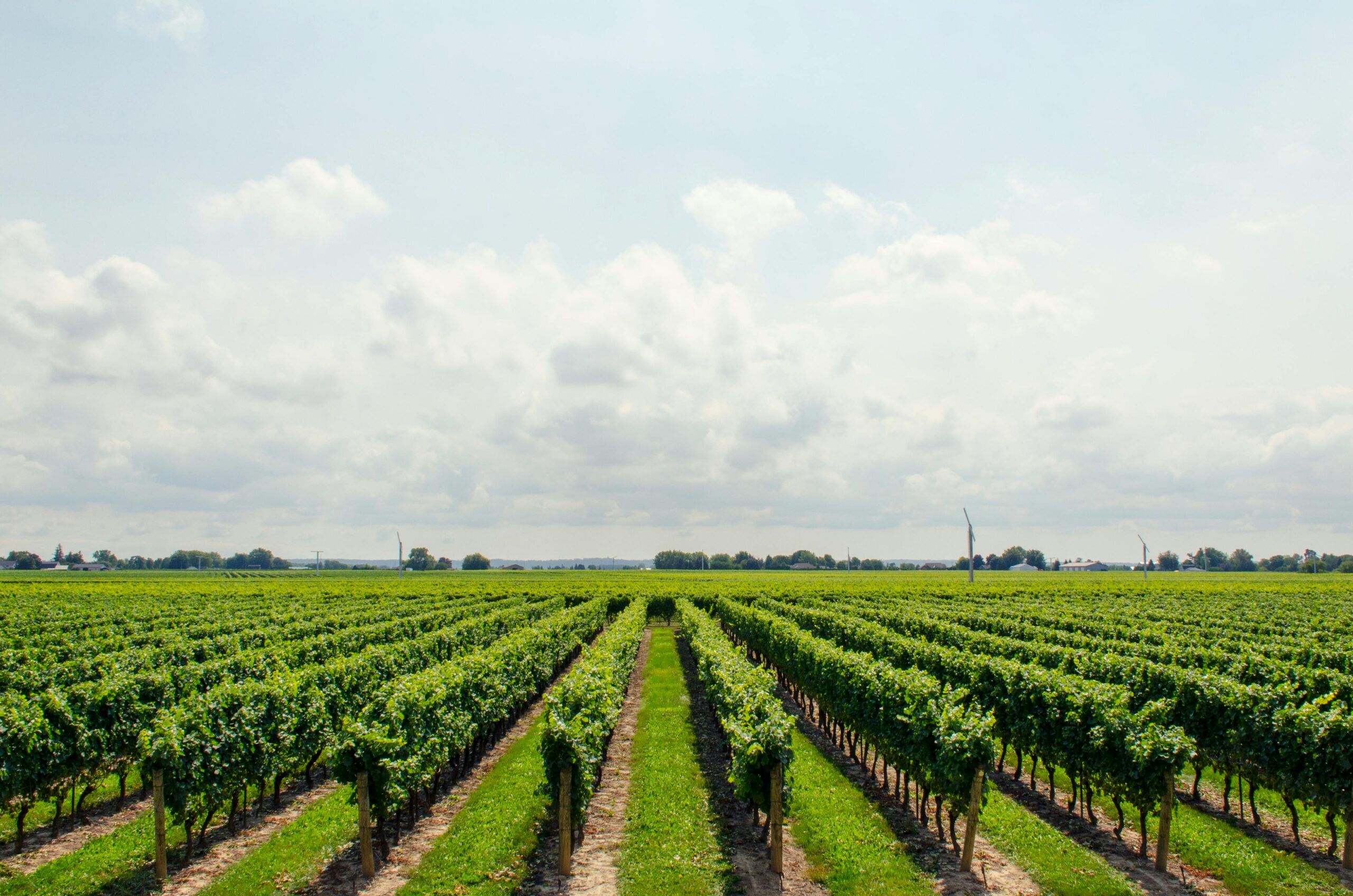Staple crops play a crucial role in feeding the world’s population, providing the foundation for many diets and ensuring food security. These crops, which are grown in large quantities and serve as dietary staples for communities around the globe, are essential for meeting nutritional needs and sustaining livelihoods. From rice and wheat to maize and potatoes, staple crops form the backbone of agriculture in numerous countries. In this article, we will explore the significance of these crops, their impact on global food security, and the challenges faced in their production and distribution.
The Importance of Staple Crops
Staple crops are the foundation of global food systems, serving as the primary source of calories and nutrients for billions of people. These crops provide essential macronutrients like carbohydrates, proteins, and fats, along with vital micronutrients such as vitamins and minerals. They form the basis of diverse diets and are especially critical for vulnerable populations who heavily rely on them for sustenance.
1. Food Security
Staple crops are essential for ensuring food security, which is the state when all individuals have access to sufficient, safe, and nutritious food to meet their dietary needs. These crops, cultivated in large quantities, contribute significantly to the global food supply. They are often affordable and readily available, making them accessible to people across various socio-economic backgrounds.
2. Nutrition
Staple crops are a vital source of nutrition, providing essential elements for a balanced diet. For instance, grains like rice and wheat are rich in carbohydrates, which are the body’s primary energy source. Additionally, these crops can be fortified or enriched with essential vitamins and minerals, further enhancing their nutritional value.
3. Livelihoods
Staple crops play a crucial role in supporting rural economies and livelihoods. Many smallholder farmers rely on these crops as their main source of income. By cultivating and selling staple crops, farmers can generate revenue to support their families, invest in education, healthcare, and other essential needs.
4. Cultural Significance
Staple crops hold immense cultural significance in communities around the world. Traditional dishes, festivals, and customs often revolve around these crops, forming an integral part of local heritage. Preserving and promoting the cultivation and consumption of staple crops not only helps sustain cultural practices but also aids in maintaining biodiversity and traditional knowledge.
5. Environmental Impact
Staple crops can have both positive and negative environmental impacts. On one hand, they contribute to soil fertility and help prevent erosion when grown using sustainable agricultural practices. On the other hand, large-scale monocultures and intensive farming methods can lead to deforestation, water pollution, and biodiversity loss. It is crucial to implement environmentally friendly farming techniques to minimize the negative effects associated with staple crop production.
Challenges in Staple Crop Production
Despite their significance, staple crop production faces several challenges that can impact food security and agricultural sustainability. Understanding and addressing these challenges is crucial for ensuring a stable and resilient global food system.
1. Climate Change
Climate change poses a significant threat to staple crop production. Increasing temperatures, erratic rainfall patterns, and extreme weather events can negatively impact crop yields and quality. Droughts, floods, and heatwaves can all disrupt agricultural systems and lead to food shortages and price volatility.
2. Pests and Diseases
Pests and diseases pose a constant risk to staple crops. Insects, fungi, bacteria, and viruses can cause significant yield losses and reduce the quality of harvested crops. Developing and implementing integrated pest management strategies and disease-resistant crop varieties is crucial for mitigating these risks.
3. Limited Access to Resources
Many smallholder farmers, particularly in developing countries, face challenges in accessing essential resources for staple crop production. Limited access to land, water, quality seeds, fertilizers, and modern farming technologies can hinder productivity and sustainability. Improving access to these resources can empower farmers and enhance their livelihoods.
4. Market Volatility
Staple crop markets can be volatile, with prices subject to fluctuations influenced by factors such as weather conditions, global demand and supply, trade policies, and geopolitical events. Unpredictable price changes can affect farmers’ incomes, food affordability, and access, particularly for vulnerable populations.
5. Post-Harvest Losses
Post-harvest losses, including improper storage, transportation, and processing, can significantly reduce the availability and quality of staple crops. Addressing these losses through improved infrastructure, technologies, and knowledge sharing can help maximize food availability and reduce waste.
6. Lack of Agricultural Knowledge
Inadequate access to up-to-date agricultural knowledge and information can hinder the adoption of best practices in staple crop production. Providing farmers with training, extension services, and access to relevant information can enhance productivity, sustainability, and resilience in the face of challenges.
Sustainable Solutions for Staple Crop Production
To address the challenges facing staple crop production and ensure long-term food security, sustainable solutions are essential. These solutions focus on maximizing productivity, minimizing environmental impact, and promoting resilience in agricultural systems.
1. Climate-Smart Agriculture
Implementing climate-smart agriculture practices can help mitigate the impacts of climate change on staple crop production. These practices include conservation agriculture, agroforestry, and precision farming techniques that optimize resource use, improve soil health, and enhance resilience to climate variability.
2. Crop Diversity
Promoting crop diversity is crucial for reducing vulnerability to pests, diseases, and climate-related risks. By cultivating a variety of staple crops and incorporating traditional and locally adapted varieties, farmers can enhance resilience, preserve biodiversity, and maintain nutritional diversity in diets.
3. Improved Access to Resources
Ensuring equitable access to resources such as land, water, credit, and technology is vital for smallholder farmers. Governments, organizations, and stakeholders need to invest in infrastructure, training, and support systems to empower farmers and enable them to adopt sustainable and efficient practices.
4. Integrated Pest Management
Integrated Pest Management (IPM) strategies can minimize the use of chemical pesticides while effectively managing pests and diseases. IPM utilizes a combination of cultural, biological, and chemical control methods, reducing environmental impacts and preserving natural pest predators.
5. Value Chain Development
Developing robust and inclusive value chains for staple crops can enhance market access, reduce post-harvest losses, and ensure fair prices for farmers. Strengthening infrastructure, storage facilities, and market linkages can improve the efficiency and profitability of staple crop production.
6. Knowledge Sharing and Research
Investing in agricultural research and knowledge sharing is crucial for innovation and continuous improvement in staple crop production. Collaborative efforts involving scientists, farmers, and policymakers can lead to the development of new technologies, best practices, and policies that promote sustainable and resilient agriculture.
By implementing these sustainable solutions, we can foster a more secure, resilient, and environmentally friendly future for staple crop production, ensuring that these essential crops continue to nourish and sustain communities around the world.
The Future of Staple Crop Production
The future of staple crop production lies in innovation, sustainability, and adaptability. As the global population continues to grow, and the challenges of climate change persist, it becomes crucial to explore new approaches and technologies to ensure food security for all.
1. Precision Agriculture
Precision agriculture utilizes advanced technologies, such as remote sensing, drones, and data analytics, to optimize farming practices. By precisely monitoring and managing variables like soil moisture, nutrient levels, and pest infestations, farmers can improve resource efficiency, reduce environmental impact, and maximize yields.
2. Genetic Improvements
Ongoing research in crop genetics holds promise for developing varieties with enhanced traits, including drought and disease resistance, improved nutritional content, and higher yields. Genetic improvements can contribute to more sustainable and productive staple crop production systems.
3. Vertical Farming
Vertical farming, which involves growing crops in vertically stacked layers, offers potential solutions to land scarcity and adverse climate conditions. By utilizing controlled environments, LED lighting, and hydroponic or aeroponic systems, staple crops can be cultivated year-round, with minimal water usage and reduced pesticide requirements.
4. Agroecology
Agroecology emphasizes the integration of ecological principles into agriculture, promoting biodiversity, natural pest control, and soil health. This approach encourages the use of organic fertilizers, crop rotations, and agroforestry, fostering resilient and sustainable staple crop production systems.
5. Digital Agriculture
The digitalization of agriculture, through the use of mobile applications, smart sensors, and blockchain technology, can enhance information sharing, traceability, and transparency in staple crop value chains. This can empower farmers, improve market access, and strengthen consumer trust in the food system.
6. Policy and Investment Support
Effective policies and increased investment are essential for driving innovation and supporting sustainable staple crop production. Governments, international organizations, and private sectors need to prioritize agricultural research, infrastructure development, and financial support to create an enabling environment for farmers and ensure long-term food security.
By embracing these advancements and fostering collaboration between scientists, farmers, policymakers, and consumers, we can shape a future where staple crop production is not only resilient and sustainable but also capable of meeting the nutritional needs of a growing global population.
Conclusion: Ensuring a Sustainable Staple Crop Future
Staple crops are the backbone of global food security, providing essential nutrition and supporting livelihoods around the world. However, they face numerous challenges, including climate change, pests, limited resources, market volatility, and post-harvest losses.
To overcome these challenges and secure a sustainable future for staple crop production, it is crucial to embrace climate-smart agriculture practices, promote crop diversity, improve resource access, implement integrated pest management, develop resilient value chains, and invest in knowledge sharing and research.
Furthermore, embracing innovative approaches like precision agriculture, genetic improvements, vertical farming, agroecology, and digital agriculture can revolutionize staple crop production, making it more efficient, environmentally friendly, and resilient to climate change.
Policy support and increased investment in agriculture are also vital to drive innovation, create an enabling environment, and ensure long-term food security for all. By working together and prioritizing these efforts, we can build a sustainable future where staple crops continue to nourish communities, protect the environment, and support livelihoods.
In conclusion, staple crops play a crucial role in global food security, providing the foundation for diets and ensuring nutrition for billions of people. However, their production faces challenges such as climate change, pests, limited resources, market volatility, and post-harvest losses. To overcome these challenges, sustainable solutions such as climate-smart agriculture, crop diversity, improved resource access, integrated pest management, and resilient value chains need to be implemented. Embracing innovative approaches like precision agriculture, genetic improvements, vertical farming, agroecology, and digital agriculture can further enhance staple crop production. With policy support and increased investment, we can secure a sustainable future where staple crops continue to nourish communities, protect the environment, and support livelihoods. By prioritizing these efforts, we can ensure a resilient and secure global food system for generations to come.

